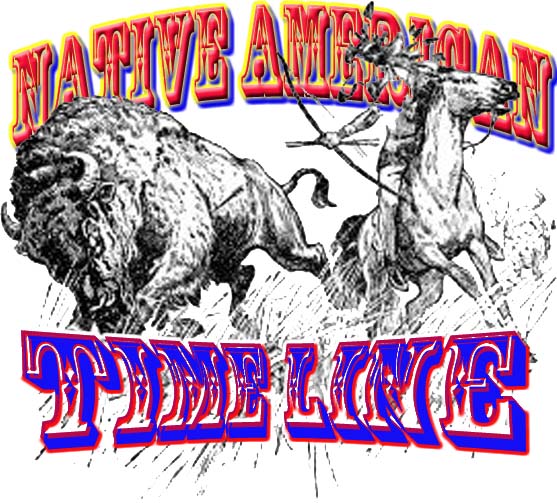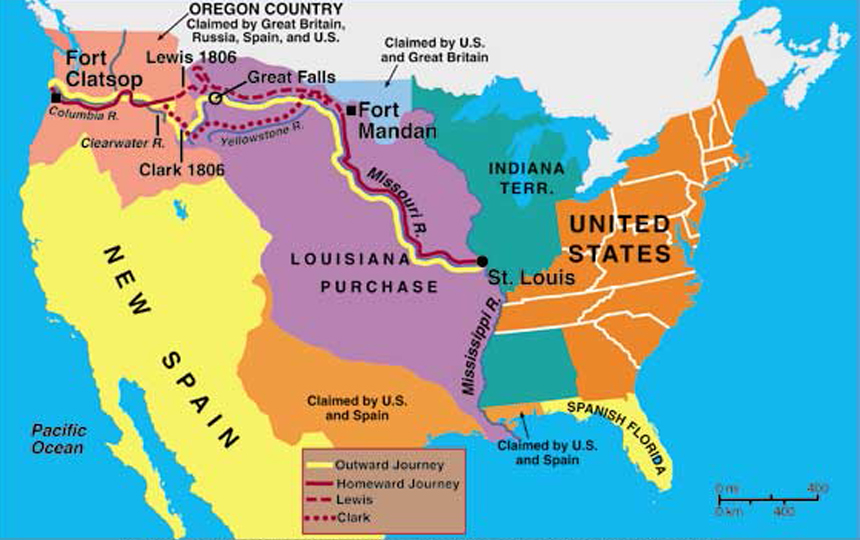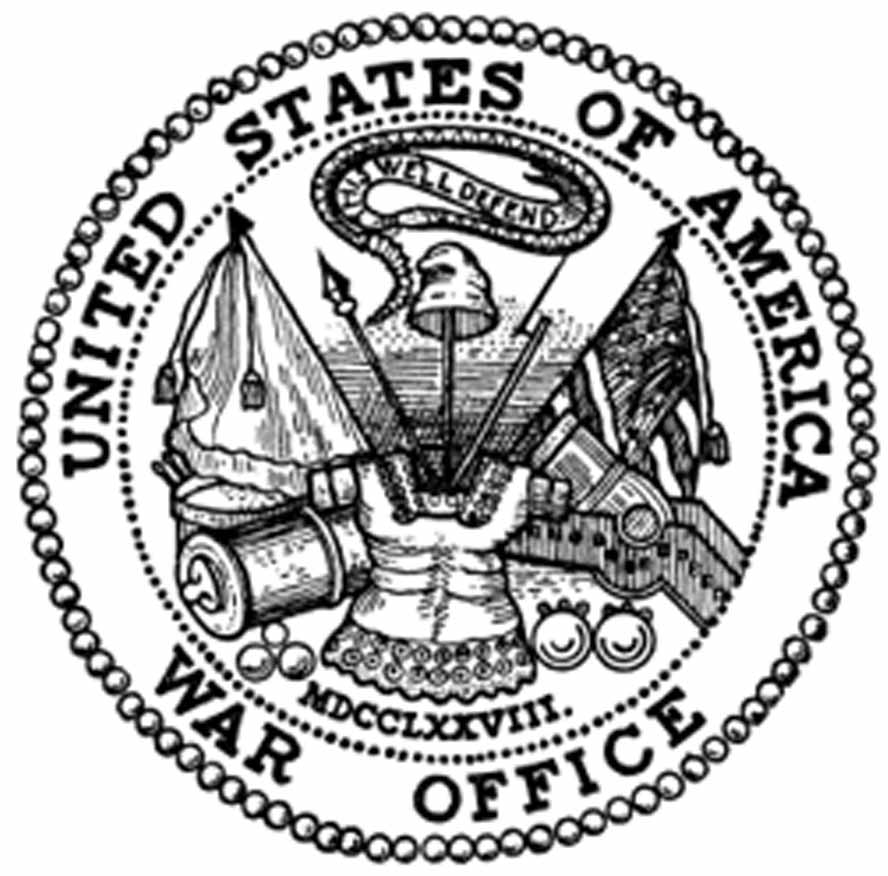1803
President Thomas Jefferson organized the Louisiana Purchase from France, it was the largest territorial gain in U.S. history, stretching from the Mississippi river to the Rocky Mountains, and it doubled the size if the United States.
The Lewis and Clark expedition begins its exploration of the West.
1804
Lewis and Clark meet the Sioux Indians for the first time.
The fur trade becomes a central part of the Oglala way of life, with trading posts opening on the frontier.
Oglala and other Lakota tribes control from North Dakota, south to the Platte River in Nebraska, and west to Wyoming.
On March 26, the U.S. government gave first official notice to Indians to move west of the Mississippi River.
1804-06
Sacagawea, a Shoshone Indian, leads Lewis and Clark as they chart a trail west to the Pacific coast.
1808
The Osage sign a treaty surrendering their lands in Missouri and Arkansas to the government.
1808-12
The settlement of Prophetstown was started by the Chief of the Shawnee Tecumseh, and his brother “the Prophet”, and they preached that the Indian could lose their way of life by signing treaties with the government.
Indians of the northwestern frontier, under Tecumseh’s leadership, believed the Ohio River must be a stable border line between Indian land and the United States.
The governor of Ohio, William Henry Harrison approves treaties with several Indian tribes.
1810
Three million acres of Native American land along the Wabash River, home of the Delaware, Potawatomi, Miami, and the Eel River Miami, was surrender to the government with the signing of the Treaty of Fort Wayne.
Tecumseh professed that he and the confederacy of Indian tribes will never honor any treaties other tribes signed with the U.S. government, and he threatens Harrison during a conference.
1811
Indians offer gifts and promise of peace at Fort Okanogan along the Columbia and Okanogan Rivers.
The Shawnee Prophet Tenskwatawa, Tecumseh’s brother, was killed leading the attack in the Battle of Tippecanoe, and the Indian confederation collapsed.
While Tecumseh was away from Prophetstown, Harrison ordered it destroyed by his troops and any thing that remained of his Indian confederacy.
1813-14
General Andrew Jackson prompted the Creek War in hopes that the Indians would surrender their land to the government.
At the treaty of Fort Jackson, the Creek Nation lost 14 million acres, two-thirds of their tribal homeland, the largest land grab ever made in the southeast.
The victors counted the 557 dead Creek by cutting off noses, and some of the bodies were skinned to be tan as trophies of battle.
1815
Fort Blount is Florida is taken by Creek Indians with the help of Afro-Americans, and it becomes a safe haven for runaway slaves, but U.S. troops burn the fort when they take it back a year later.
On July 27, the Seminole Wars began.
1817
The Indian County Crimes Act passed by Congress, gives the federal government authority over all Indian crimes.
1818
The First Seminole War ended at the Battle of Suwanee, when Indians and African Americans fighting together, are overpowered and beaten by Andrew Jackson his troops.
1820
In the California missions over 20,000 Indians are being held against their will as slave labor.
1821
South Carolina settlers and their Cherokee allies attack and defeat the Yamassee.
Indian of the Five Civilized Tribes, Choctaw, Chickasaw, Cherokee, Creek, and Seminole began to be forcibly removed by the U.S. government from their native lands to Indian territory west of the Mississippi river.
1822
A law is passed prohibiting the sale of alcohol to Indians, it upsets the fur trade that used alcohol to barter for furs.
1823
The Supreme Court decided that the discovery of land gave exclusive title to those who discovered it, giving title of all Indian lands, to the government, and tribes could not sell land to anyone other than the federal government of the U.S.
1824
The Secretary of War, John C. Calhoun, without authorization from Congress, formed the Bureau of Indian Affairs.
1825
The Lower Towns Creek leader, William McIntosh, signed the Treaty of Indian Springs, surrendering much of their remaining homeland to the U.S. government, doing so he violated Creek law and the National Council ordered him and two other signatories to be executed for crimes against the Creek Nation.
1827
In Georgia, Creek Indians sigh another treaty surrendering there lands, and 703 Indians and 86 slaves began the migration towards Fort Gibson in Oklahoma.
1828
The first Indian newspaper is published in the Native American language by Elias Boudinot and Sequoyah.
1829
To gain better access to the water of the Tennessee River, in 1827-37, twenty-three thousand Creek Indians are removed from their native homeland and are relocated west of the Mississippi River.
1830
The Indian Removal Act was passed and thousand of Native Americans were forcibly removed from their homes, the Cherokee in Georgia could only hold council to sell land to whites, and the Choctaw were forced to sign a treaty that traded their rich homeland for land in Oklahoma.
1831
Black Hawk, the Chief of the Sauk, and the Fox tribes were pressured to sell their lands and mover west of the Mississippi River and stay there.
Georgia court rules that Indians, are neither US citizens, or an independent nation, but they are domestic dependents.
U.S. troops are beaten at Okeechobee by Black Seminole Indians in the Second Seminole War.
1831-32
The Supreme Court changes Indian tribal authority by ruling that they were domestic dependent nations and were a responsibility of the federal government.
1832
Red Clay, Tennessee, Eastern Cherokee refuse to discuss Presidents Jackson’s suggestions for their removal to Oklahoma Indian Territory unless the federal government honor what they promised in earlier treaties.
Illinois militia slaughter 150 Sac and Fox men, women, and children that were under a flag of truce at the Bad Axe River.
1833
Florida makes it against the law for Indians to be inside the boundaries of the state.
1834
Indian Territory is created in the west for those who were removed from their ancestral homelands, but by 1870 the land is decreased to the size of Oklahoma without the panhandle.
The Oglala Tribe organizes following Chief Bull Bear.
1835
Only a percentage of Cherokee Indians sign the Treaty of New Echota in which gives up their homelands and agree to move west to Indian Territory, the larger population did not agree to take these terms and refused to relocate.
1835-42
The U.S. government spent over 50 million dollars, more than the entire U.S. budget, for Indian removal in the second and most terrible of three Seminole Wars.
1836
The U.S. Army removes by force 14,000 Creek Indians from their Alabama homeland to Indian Territory in Oklahoma.
1837
Only two thousand out of six thousand Blackfoot survived the smallpox epidemic.
1838
The earlier treaties giving the Cherokee the right to stay on their lands was ignored by President Jackson when federal troops were used to forcibly remove 16,000 that refused to move west to Indian Territory under the Treaty of New Echota.
Indian people were driven by soldiers, like cattle, and were imprisoned without proper shelter where 1,500 died exposed the summer heat.
Because of harsh treatment and neglect on the forced march, over 4,000 Cherokee die on, “The Trail of Tears”, from their homeland to Indian Territory in Oklahoma.
Osceola, Chief of the Seminole Indians, who fought against the forced removal and relocation of his people to Indian Territory, dies of malaria at Fort Moultrie, South Carolina.
1841
Forty-eight wagons arrive in Sacramento by way of the Oregon Trail, one of the earliest large groups to make this journey.
1843
Second Seminole War ends.
1847
Manifest Destiny, the 19-century belief that expansion of the U.S. was justified and inevitable, began westward through Indian lands on the Oregon Trail.
Thomas H. Hardy, Superintendent of Indian Affairs in St. Louis warns of trouble from declining buffalo herds.
1849
The American Fur Company sells Fort Laramie to the U.S. government and troops are stationed there.
All Indian affairs are moved to the new U.S. Department of the Interior.
The newly established Corps of Civilian workers offer medical care the Indians.
The first California Gold rush is started by James Marshall when he discovers gold in the stream at Sutter’s Mill and triggers the forty-niners seeking their fortune.









































